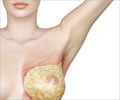
‘A newly developed computer program automatically counts the number of tubules found in whole slide images of breast cancer tissue specimens.’
Tweet it Now
Tubules represent the tumor's vasculature, providing tumors with oxygen and nutrition. The more of them there are, the more likely a patient will need chemotherapy. In a study published in Scientific Reports, the researchers developed a computer program to automatically count the number of tubules found in whole slide images of breast cancer tissue specimens. They found the number of tubules correlated with the scores produced by the current best test differentiating between indolent and aggressive ER+ cancers.
"This is the first large-scale validation that fundamental prognostic information is in the tissue data, and that it predicts the underlying genomics of the tumor," said Anant Madabhushi, F. Alex Nason professor II of biomedical engineering and an author of the study. "If we can mirror the genomics of the tumor, we can predict who responds to hormone therapy only and who doesn't," he said.
Madabhushi teamed with David Romo Bucheli and Eduardo Romero, engineering faculty from the Universidad Nacional de Colombia, in Bogota; Andrew Janowczyk biomedical engineering research associate at Case Western Reserve; and Hannah Gilmore, associate professor of pathology at Case Western Reserve School of Medicine.
The researchers used machine learning to allow a computer to best quantify the number of tubules automatically and quickly.
Advertisement
The gene expression test has been shown to be predictive in identifying which ER+ breast cancer patients would benefit from chemotherapy, but the cost is out of reach for low- and middle-income patients around the world, and the wait time can be weeks, Madabhushi said. His group at the Center for Computational Imaging and Personalized Diagnostics is exploring alternative means to cheaply and quickly provide the same answers.
Advertisement
If all contribute to accurate predictions, Madabhushi plans to integrate them and develop one program that provides a coherent prediction.
Source-Eurekalert















